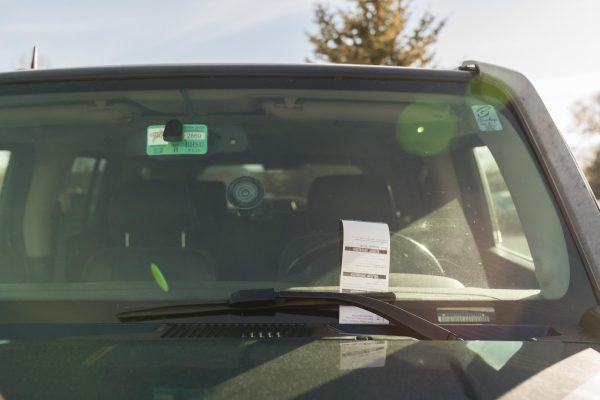Rock climbing provides alternative physical activity
Discovering a new hobby can be overwhelming at times, especially for something as extreme as rock climbing. Rock climbing is extremely different than hiking and inexperience may lead to life-threatening situations. Climbers must trek straight up a cliff with no gear assisting the climba��just hands, feet and the rock. The gear carried is only to prevent a fall that would likely cause injury or death. Sound like a fun pastime?
Rock climbing indoors offers this thrilling full-body workout in a safe and controlled environment that is fantastic for beginners. No skill level is required to climb, but everyone should follow a few basic steps to guarantee the safest and most pleasant experience possible.
Proper gym climbing gear is necessary for everyone interested in the rock wall. The minimum equipment necessary to climb consists of climbing shoes, a belay device and a climbing harness. For the first time climbing, rent the gear. Most gyms offer basic equipment for a small rental fee. Clothes should be comfortable and allow for mobility, like yoga clothes. Capris and knee-length shorts are also acceptable for climbing, but short-shorts should be avoided as they offer little coverage and may cause discomfort with the harness on. Chalk may also be used in order to keep hands dry and avoid slipping.
Climbing safely is the most important part of rock climbing. Although climbing indoors may reduce the chances of injury due to weather, falling rocks and breaking holds that can occur from outdoor rock climbing, safety precautions must be taken. As with any physical activity, it is helpful to stretch both before and after climbing. If climbing for an extended period of time, it is important to stay hydrated and sustain caloric consumption.
As the climber, make sure knots are properly tied, the harness is buckled and double-backed, and the rope is through connection points of the harness. The belayer is in charge of ensuring safety for the climber and must double check the climber’s harness. They must also make sure the rope, belay device and belay loop of the harness are inside the locking carabiner. The belayer must then lock the carabiner and check that the rope is tail-side down exiting the belay device. Trained facilitators will be available to assist both the climber and the belayer to assure the safest climb possible. A supervisor must check belaying skills before the climb begins, and classes are offered to first timer belayers. Safety always comes first.
Knowing some rock climbing lingo may make the experience seem less intimidating to beginners. The spot to grab and pull up higher is known as the “hold.a�� A “carabinera�� is a D-shaped ring with a spring catch on one side used for binding ropes. “Belaya�� is a type of carabiner that the climbing rope runs through on the harness. “To belaya�� means to be on the ground running the rope for the climber. Using one’s knee or shin to push up to the next hold is called “mantling.a�� Communication between the climber and the belayer is extremely important. “Climbing!a�� should be shouted so the belayer knows the climber is beginning and the belayer should respond with “climb ona�� as confirmation to continue. The belayer should never take their eyes off the climber. When ready to descend, the climber will let go of the holds and “walka�� down the wall as the belayer supports weight and begins to lower.
Indoor rock climbing may be ideal for beginners, but the sport is popular with climbers of all abilities. People of all ages, even kids are welcome to climb, seem to enjoy the intense exercise of rock climbing. This sport is fun, noncompetitive and physically challenging. Rock climbing requires communication and support between partners, so it encourages social interaction while remaining independently satisfying. Whether climbing for exercise, passion or just for fun, indoor rock walls offer a unique experience that can be enjoyed year-round.











